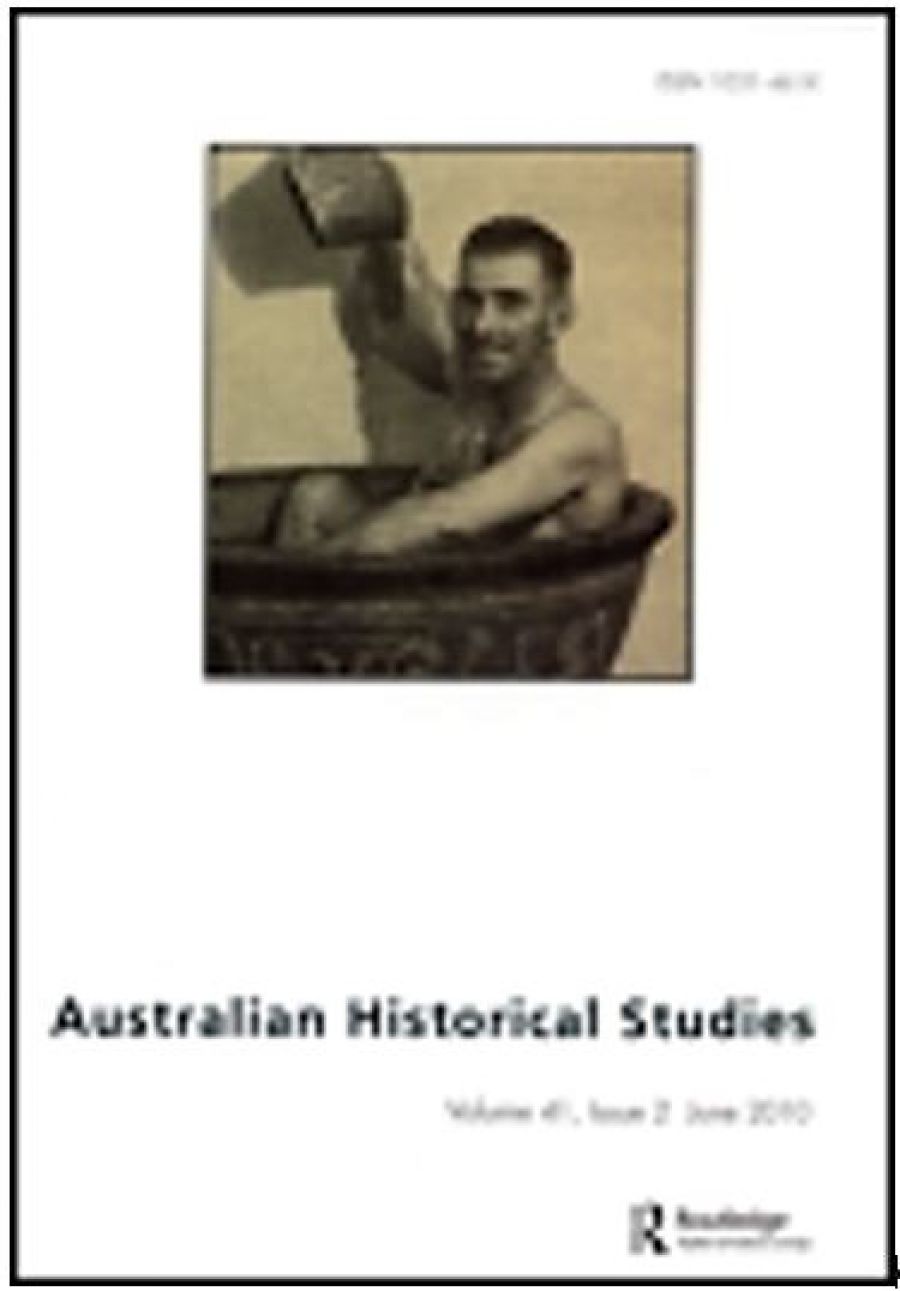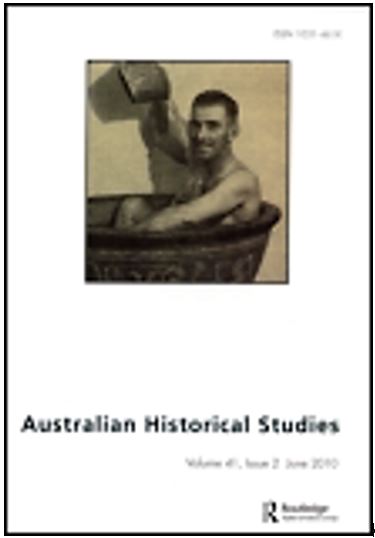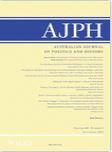
- Free Article: No
- Contents Category: Journals
- Custom Article Title: A tale of two journals
- Review Article: Yes
- Article Title: A tale of two journals
- Online Only: No
- Custom Highlight Text:
A thematic offering on sexuality from Australian Historical Studies (AHS) and an assortment of political history from the Australian Journal of Politics & History (AJPH). The first promises a diverse collection of articles that ‘not only speak productively to each other but also provocatively continue the project of putting historically framed sexual questions, and sexually framed historical questions, into scholarly debate’ but actually delivers something more modest. The second lacks this kind of thematic ambition, yet manages to surprise us with the weight of its straightforward historical sensitivity.
- Book 1 Title: Australian Historical Studies
- Book 1 Subtitle: Histories of Sexuality, Vol. 36, No. 126
- Book 1 Biblio: $60 p.a. pb, 222 pp
- Book 1 Cover Small (400 x 600):
- Book 1 Cover (800 x 1200):
- Book 2 Title: Australian Journal of Politics and History
- Book 2 Subtitle: Vol. 51, No. 2
- Book 2 Biblio: Blackwell, £97 p.a. pb, 173 pp
- Book 2 Cover Small (400 x 600):
- Book 2 Cover (800 x 1200):
Not all of the authors suffer from this need for marginality. Kate Murphy’s insights into the decline of the birth rate in New South Wales and the ensuing Royal Commission in 1903–04 shows the real potential of this kind of historical scholarship. By closely following the commission’s report, Murphy is able to explain the uncertainty surrounding motherhood in those post-Federation years, untangling the dissonance between the notion that motherhood was a natural occupation for the women of white Australia and the apparent need to institute programmes to educate and school them in this role. Here we see that gender is not used as a tool to define and push at the edges, but to explore how and why they exist. The result speaks eloquently for the strength of Murphy’s own work and to the desires of the editors of AHS.
Similarly, Steven Angelides’s discussion of the emergence of ‘paedophile’ into the popular vocabulary captures the modern homosexualised hysteria surrounding it with a series of telling insights. Yet he stops short of reading how words like paedophile play a deadly role in society – where the power lies as much in connotations of homosexuality as they do in the very word itself – and misses the opportunity to reflect on the theoretical imperatives used to explain the very world to which they are applied. That is why this collection of articles fails to articulate its provocative impulse to put historically framed sexual questions, and sexually framed historical questions, into scholarly debate. Too much time is spent coaxing the past to lay idly between the limits of theoretical concepts, rather than attempting to interpret those very everyday limits within which the past’s present is suspended.
Putting together a collection of articles is never simple. Should they stand alone or speak to one another? While the editors of AJPH have not explicitly attempted to do the latter, a close reading of the journal reveals that these articles interact in revealing and surprising ways.
David M. Farrell and Ian McAllister’s article sets the pace for this volume. They discuss the origins of the preferential electoral system in Australia with a fine eye for unravelling its complexities. Perhaps more telling, however (especially when situated aside the special issue of AHS), is the way they articulate the role Catherine Helen Spence played in these changes. There is no theatrical rhetoric or talk of her uncovered agency, just an account of her importance within the wider frame of the development of the preferential system.
Priscilla Roberts’s discussion of the New York intellectual Paul D. Cravath also tries to situate him within the wider frame of the shifts in American foreign policy. While this might not be as straightforward as Roberts sometimes makes out, there is an excerpt from an article that Cravath wrote for the New York Times in 1919 that points to the deeper sensitivity of her work. Cravath wrote: ‘the best insurance of the peace of the world is a sound and lasting friendship between the English Speaking Nations.’ One cannot help feeling that this speaks at once to Cravath’s idealised world and to our own present reality. In this modern age of terrorism, desperate alliances and the Iraq war, it is a chilling statement and a cautious reminder that antiquated historical practice has a little force left in it yet.
That theatrical turn serves as a frame for the final three articles. Matt McDonald’s analysis of Australia’s changing approach to global warming; Caner Bakir’s rigorous account of the changing politics of bank mergers; and Tom Conley’s exploration of issues surrounding Australian foreign policy all provide insights that speak beyond the complexities of the issues and to a wider narrative that hopelessly ends with that same, all too familiar story: we see that the history of indifference sounds well versed in a nation with an indifference to history. It is a conclusion that strikes deeply, and a reminder that sometimes history at the margins does not weigh as heavily as those straightforward stories told with stark clarity from the centre.




Comments powered by CComment